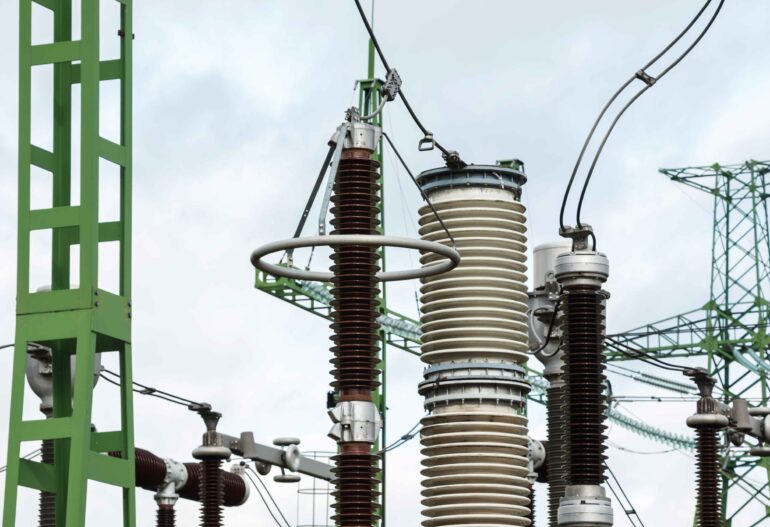A stay wire, also known as a guy rope, is a tensioned cable designed to add stability to a free-standing structure. Stay wires find widespread applications in various fields, including supporting ship masts, wind turbines, radio masts, utility poles, and tents. A slender vertical mast that relies on guy wires for support is referred to as a guyed mast.
These stay wires are commonly constructed from robust materials such as high-strength steel or stainless steel. They are attached to the structure at multiple points, and are tensioned so that they pull the structure upright. This helps to prevent the structure from swaying or collapsing in high winds or earthquakes.
Stay wires are an essential component of many structures, and they play a vital role in ensuring their safety and stability.
What Does It Do?
A stay wire is a type of tension component that is used in construction to provide support for vertical elements like poles, masts, and towers. These wires are typically crafted from high-strength materials, such as steel or stainless steel. The components of stay wire can ensure their durability and reliability.
Stay wires can be categorized as either guyed, where they are connected to anchors at multiple points, or unguyed, where they are linked to only one anchor point.
The significance of stay wires extends to various structures, including bridges, power lines, and communication towers. Their primary function is to enhance the stability of the structure and prevent it from toppling over during adverse weather conditions, particularly in the face of strong winds.
Additionally, stay wires may also find application in providing support for horizontal elements like beams and trusses in certain scenarios.
Uses of Stay Wire:
Here are some examples of where stay wires are used:
- Power lines: Stay wires are used to support power poles and towers, especially in areas where there is a high risk of high winds or earthquakes.
- Communication towers: Stay wires are also used to support communication towers, such as cell phone towers and radio towers.
- Wind turbines: Stay wires are used to support the towers of wind turbines.
- Bridges: Stay wires are used to support the decks of some bridges, such as cable-stayed bridges.
- Tents: Stay wires are used to stabilize large tents, such as those used for concerts and sporting events
Stay Wire: The Main Aspect Of Its Using
After knowing the function of the stay wire, it is important to take a look at the main aspects of it. Stay wires are an important part of modern construction, and they play a vital role in keeping our infrastructure safe and reliable. Here are the main aspects:
- Use In The Utility Poles Of Power Station
They are strong enough to stand independently. Their installation is essential in specific posts to bolster imbalanced horizontal forces. The manufacturer of stay wires incorporates a strain insulator composed of materials such as fiberglass or ceramic near the upper section to guard against potential faults.
- To Support Anteena
Stay wires are utilized to provide support for mast antennas due to the electromagnetic fields they emit. To safeguard against distortion of the radiation pattern, strain insulators are employed to divide the wires into multiple sections.
Tall mast structures can generate static electricity in their conductive stay wires, leading to significant voltage surges surpassing those produced by the transmitter. Therefore, it is crucial for insulators to be designed in a way that prevents hazardous discharges.
- The Mast of a Sailboat
Stay wires are employed to set up the mast of a sailboat, with attachment points at both the front (bow) and back (stern). To maintain the mast’s vertical alignment, spreaders are utilized, and it’s possible to install several stays. Additionally, sailboats may employ temporary stays when needed.
How To Install Stay Wire?
Setting up a stay wire is a relatively straightforward process that can be accomplished within a few hours. The initial step involves marking the ground to indicate where the postholes should be located.
Using a spade, you’ll then dig holes that should be at least two feet deep and wide enough to accommodate the posts. After positioning the posts in the holes, the next step is to pour concrete around them.
Once the concrete has solidified, you can connect the stay wire to the posts using clamps or turnbuckles. Lastly, employ the appropriate tools to tension the wire and secure it firmly in place. By following these steps, you’ll be able to effortlessly install a stay wire that will provide support for your fence or other structures.
Wrap Up
The main function of a stay wire is to provide lateral support to a free-standing structure. Stay wires are typically attached to the structure at multiple points and are tensioned so that they pull the structure upright.
This helps to prevent the structure from swaying or collapsing in high winds, earthquakes, or other lateral forces.
In India, IAC Electreicals manufactured strong and highly featured stay wire and provide installation services. To get more information, contact us to get global certified product.






